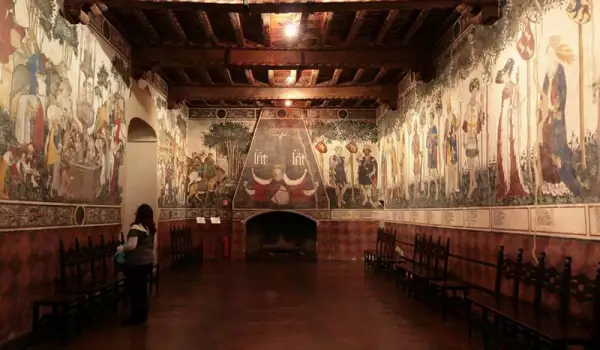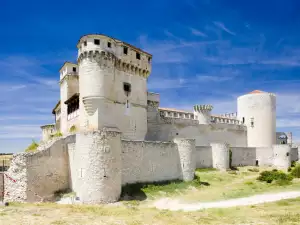Manta Castle

Manta Castle is situated in the Italian village which is located in the Piedmont region and occupies the northern part of the country. The castle is located 16 km north of Cuneo, also known as Saluzzo and is 72 km from Turin. Manta Castle is unique in nature because it has kept the unique and most important in Europe late gothic secular cycle of frescoes.
Amazing paintings on the walls of Manta were made by an anonymous master. He completed the cycle in 1420 and the beautiful paintings depict the typical scenes of a medieval men and women dressed in precious clothes for that time.
Some time ago the Manta Castle and its priceless works of art were taken into custody to the Italian Fund for Cultural Heritage Protection, who planned to restore the murals and the whole castle to make it back to its original splendor. The three-year project of Manta was launched in 2006.
The final repairs which cost the organization 4.8 million were completed in 2009 by the CRT Foundation and the Association of Piemont protection of cultural monuments who funded the repairs of the Manta Castle. The final stage of the restoration completed the recovery cycle of the frescoes and roof of the palace which alone cost 1.5 million. The facade of the mansion and original decorations from the 14th century were also restored.
The original structure of the castle Manta dates from the Middle Ages. The first building there was designed in the 12th century as a fortress, and then was turned into a private residence of the powerful dynasty - Salizos of Manta. The influential family owns the whole castle for 400 years. In the 15th century palace Manta tolerates conversion of which by then its dark facade does not correspond with the lavish and glossy exterior.
Since that time it has remained as so. The interior impresses with its unique painted ceiling and impressive rosettes. The room named after Michele Antonio, who was a descendent of Valerian and command of the castle Manta in the 16th century, is also remarkable for its richly decorated ceilings, which have nested patterns of pure gold.














